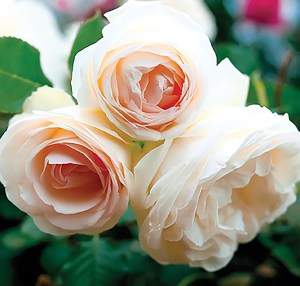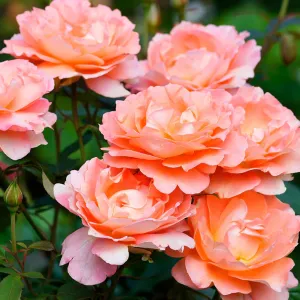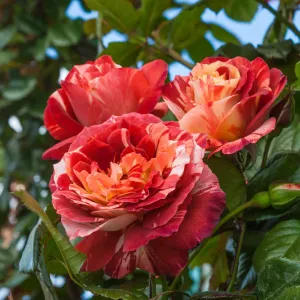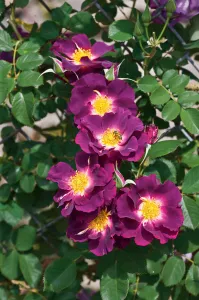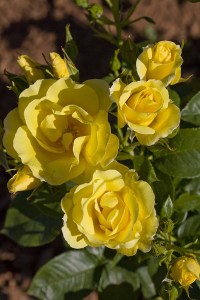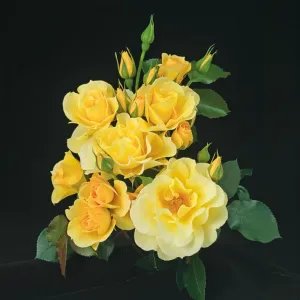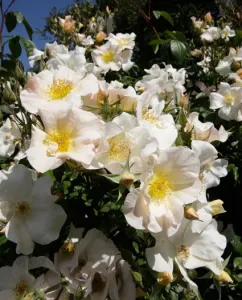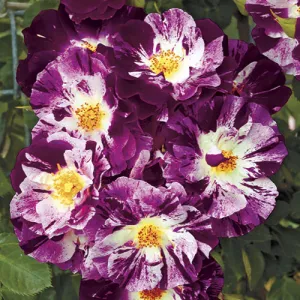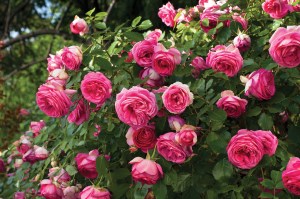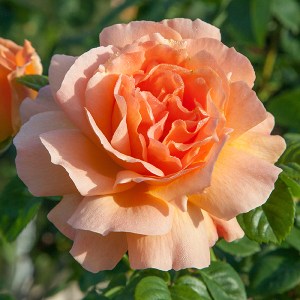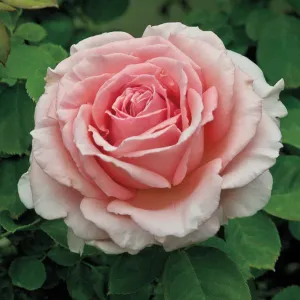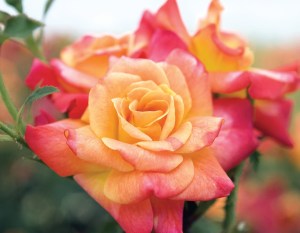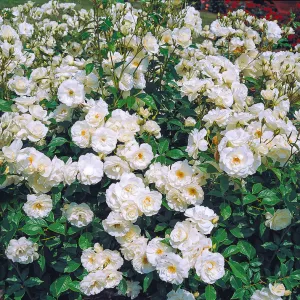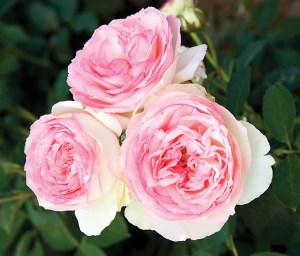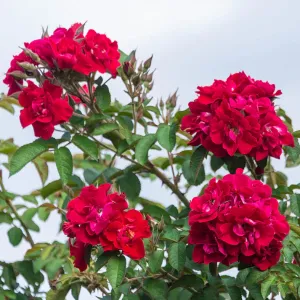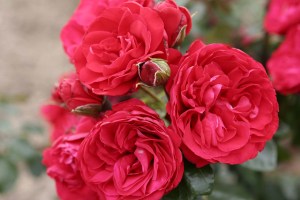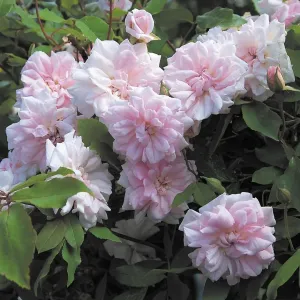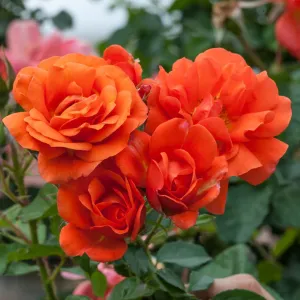Climbing Roses
ROSES ARE SHIPPED IN JANUARY ONLY!
Bare Root Climbing Roses
 Climbing roses can add wonderful vertical interest to your garden. They can be trained along fences, arbors, against walls and even used as a sprawling ground cover. For a romantic look, choose 'Eden' or 'White Eden'. Both of these roses have the look of old fashioned English roses with very full flowers.
Climbing roses can add wonderful vertical interest to your garden. They can be trained along fences, arbors, against walls and even used as a sprawling ground cover. For a romantic look, choose 'Eden' or 'White Eden'. Both of these roses have the look of old fashioned English roses with very full flowers.
One of our best selling climbing roses is 'Joseph's Coat'. The flowers are a bright combination of orange, red and yellow. Another excellent choice is 'Don Juan' with bright red flowers and abundant fragrance. 'Sky's the Limit' is a climbing rose arrayed with clusters of buttery yellow blooms.
More About Climbing Roses
Roses are adaptable to many garden styles. In formal gardens, the shrubs may be groomed to an even shape. In informal gardens, they can be allowed to do their own thing. Roses prefer rich, deep soil. If your garden has less than ideal soil, be sure to add some really good soil amendment. Roses also respond well to fertilization and there are lots of different formulas available. For the best bloom, choose one that has a high phosphorous content as opposed to one containing high nitrogen. The recommended application time is every six weeks during the growing season, but check the directions on the fertilizer that you buy.
Roses can also make excellent container plants. Choose a large pot at least 14" in diameter. Half wine barrels are fine in an informal setting. Be sure to plant the rose in a quality potting soil and fertilize as you would if it were in the ground.
Roses require at least six hours of sunlight to perform well.
In areas with high humidity, mildew and black spot can be a serious problem. A fungicide/insecticide made from neem oil is a good choice for attacking both fungal and insect problems. The product, made from the oil of the neem tree, is an environmentally good choice. For more information on roses, check out 'The Huntington Botanical Gardens - Spring in the Rose Garden' website.
Pruning is an important aspect of rose culture. The main pruning season is early winter. The exact time varies with different climates. Each type of rose, Hybrid Tea, Climber, Miniature, etc., requires a slightly different technique. Aside from the main pruning which occurs in the dormant season, be aware that each time you remove a spent blossom you are pruning the plant. It is advisable to make your pruning cuts to encourage the growth of an outside bud away from the interior of the plant. This practice allows light to enter and lessens the possibility of disease.
Roses require a little extra care, but the results are extremely rewarding. With so many exciting varieties available, you're sure to find the perfect roses for your garden!

